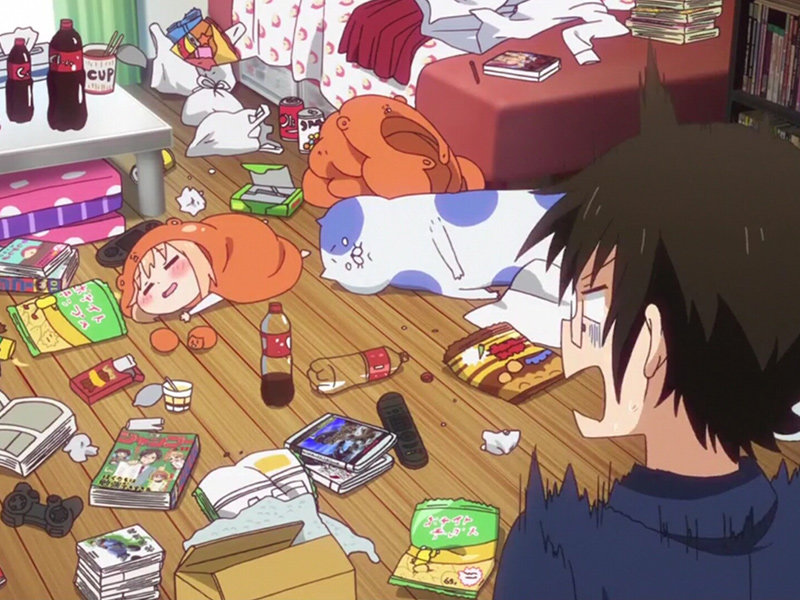You never know when a cool new trend will take root on the Internet, like that one year that everyone was suddenly pouring ice water over their heads to find a cure for ALS. Recently the #TrashTag Challenge has become a thing on social media, with people forming groups and cleaning up trash from beaches, parks and anywhere they see it and sharing before and after pictures.
Today I saw a Reddit post by a guy who had picked up a few bags of trash along a beach in Fukuoka, Japan with his grandson. There were some comments along the lines of, “But Japan is so clean, how could you find any trash to pick up?” Since this is not entirely true, I thought I’d do a post about trash in Japan.
Isn’t Japan a clean country?
It’s true that Japan is one of the cleanest countries you could find, and cities are generally spotless. However, one of the social mechanisms at work in Japan is known as 人の目 hito no me, or “the eyes of others,” which means that Japanese will be extremely careful when they’re around other people. If a Japanese person feels he’s not being observed, he’s likely to become a very different person, in some cases feeling okay with tossing his litter onto the ground. I see it daily when walking the rural streets around J-List. Sometimes there are even large bags of discarded convenience store bento trash.
Subjectively, any area built up enough that you’d be expected to clean up your dog’s poop will generally be free from litter, but an area rural enough that your dog could poop anywhere he wants might be a place you might find litter. At least that’s how it seems to work in our city.
How is trash in Japan handled?
Despite having a land mass 1/25th the size of the U.S., Japan has a bit less than half the population, which translates to a lot of people to fit into a smaller useful land area. This means there’s a lot of trash generated, which has to be managed through individual cooperation and technology, both of which the Japanese are very good at.
Is Japan a “green” country?
As you may have seen from anime, the Japanese are quite good at separating trash for easy recycling, and everyone generally has bins for moeru gomi or “burnable trash” — a word that causes endless moe-related jokes among anime fans — along with plastic, aluminum and steel cans, plus special items like wine bottles. One of the first words a foreigner living in Japan generally learns is gomi, since he has to be told how to properly separate his trash.
The social pressure to separate your garbage properly can be rather intense. In a few cities I know, residents are required to dispose of their trash in clear bags, with their names written on the outside. If they failed to properly separate everything, they’ll be subject to the disdain of their neighbors.
How does technology help manage trash in Japan?
Burnable trash is burned in a high-tech facility that each city has, sort of like the giant furnace seen in Toy’s Story 3, with scrubbers the capture a portion of the carbon dioxide as it exits. I love going to our city’s recycling center, since I can fill the J-List van with old, broken crap that I want to discard, and the staff will quickly help me sort it for disposal. I’m in and out in like two minutes.
Was Mt. Fuji Really a “Trash Mountain”?
Back in the 1990s, I climbed Mt. Fuji, like a lot of foreigners. While the view from the top was a memory I’ll never forget, I also saw huge trash piles during my climb up, where climbers — always Japanese, never foreigners — had decided to discard their used ramen bowls, chopsticks and coffee cans, rather than bring their trash down with them. I was shocked that the holiest place in Japan could be viewed as an appropriate place to discard trash by Japanese. When the pollution on Mt. Fuji caused UNESCO to deny its registry as an important world heritage site, Japan realized the error of their ways and largely cleaned the mountain up.
Why are there so few trash cans in Japan?
One frustrating reality of walking down the street in a Japanese city is that there are usually no trash cans handy. This is largely a residual effect of two sarin gas attacks in 1994 and 1995, when the Aum Shinrikyo cult killed 20 people using nerve gas. As a result, the Japanese have a cultural mistrust of public trash cans, kind of the way we still have to take our shoes off when going through security because of that one shoe bomber from 2001.
How about smoking? Do Japanese discard cigarette butts?
Along with Norway and the Netherlands, the rate of adult smokers in Japan is among the highest in the world, at around 25%, down from a high of 70% in the 1960s. Happily, Japanese smokers are extremely polite, nearly always restricting their hobby to separately ventilated rooms reserved for smokers and never disposing of butts inappropriately.
Where do you throw away onaholes?
Since someone asked, I’ll answer. In my Zen and the Art of Onahole Maintenance guide, I discuss how it can be difficult to throw away certain kinds of trash in Japan. The stealth way to dispose of an onahole is to cut it into small pieces, then wrap that up in newspaper and discard it with the burnable trash. Though some people choose more interesting disposal methods, like “sneak into my old school and leave it for a student to find, passing it on to the next generation” or “travel to China and plant it in the ground so people will think it’s a legendary mushroom.”
Are any parts of Japan considered especially dirty?
When I visited Osaka a year ago, I felt like I’d time slipped back into the Showa Era, even though it was 2018. And while things felt old and dilapidated, there was very little litter that I could see.
Got any other questions about Japan? Ask us on Twitter!
The J-List staff works hard, looking high and low for great art books and “doujin artbooks” to add to the site. Today we added lots of new products for you, including artbooks with gorgeous color printing and art inside. Browse all the new artbooks from Japan now!

















